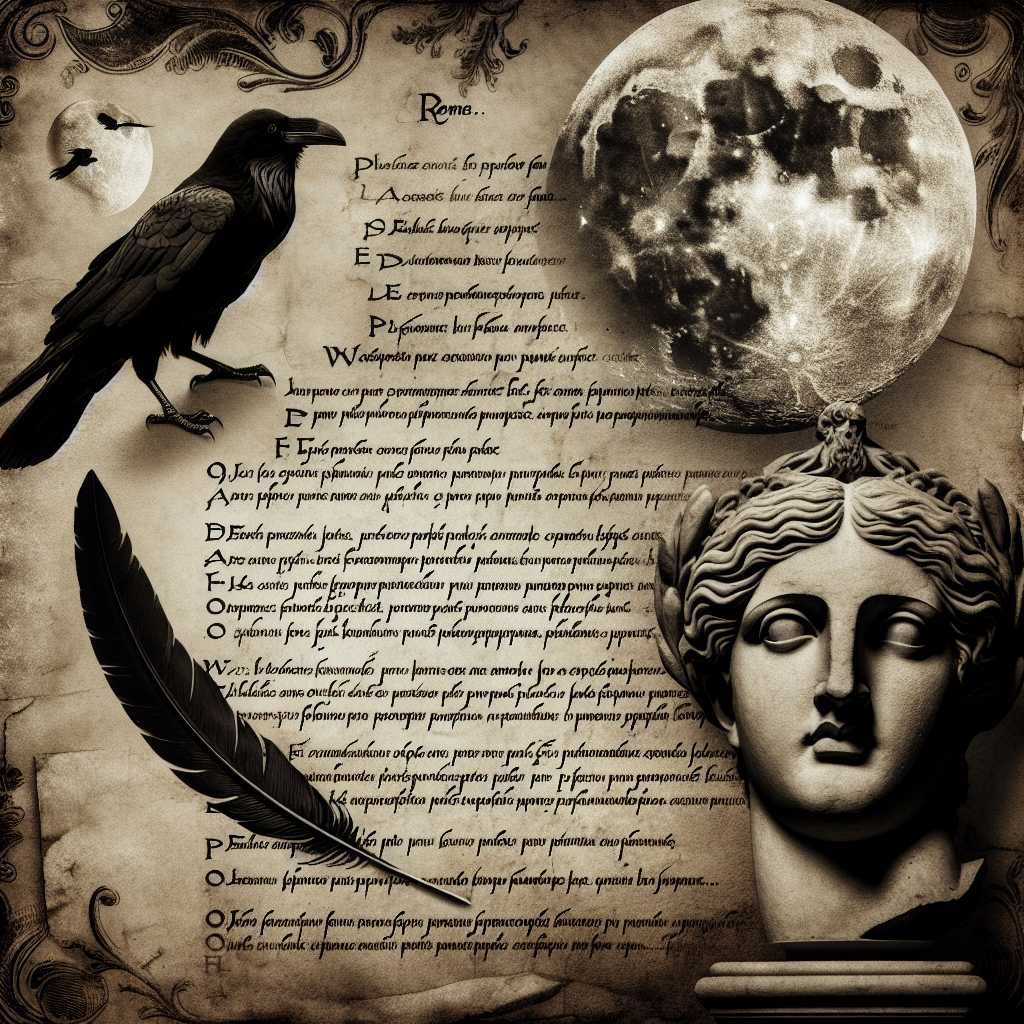Exploring the Intricacies of “The Raven” by Edgar Allan Poe
Edgar Allan Poe’s “The Raven” remains one of the most recognizable and celebrated pieces in the canon of American literature, famous for its supernatural atmosphere and its thematic complexity. First published in January 1845, the poem has captivated readers and scholars alike with its lyrical storytelling, psychological depths, and darkly romantic aesthetics. This article delves into the rich tapestry of “The Raven,” exploring its narrative, form, themes, and lasting impact in the realm of poetry and popular culture.
Understanding the Narrative Structure
“The Raven” is a narrative poem that follows a man who is lamenting the loss of his love, Lenore. Situated in his chamber on a bleak December night, the narrator encounters an unexpected visitor: a raven that enters his room only to perch above his door on a bust of Pallas Athena, the Greek goddess of wisdom. Throughout the text, the narrator projects his own sorrows and fears onto this enigmatic bird, whose repeated refrain of “Nevermore” compounds the speaker’s descent into despair.
The poem’s structure consists of 18 stanzas written in trochaic octameter. Poe uses an intricate rhyming scheme that adds to the hypnotic quality of the verse and heightens the poem’s melancholic tone. Each stanza is meticulously crafted to contribute to a crescendo of emotion and introspection as the speaker’s dialogue with the raven evolves from curious inquiry to existential dread.
Themes and Symbolism Explored
Poe weaves multiple themes throughout “The Raven,” including grief, loss, and unending sorrow. The poem is often seen as a representation of someone grappling with immense heartache—the loss of a loved one—and how such an event can push them toward a maddening obsession.
The raven itself is a complex symbol. In many cultures, ravens are associated with death and foreboding, but they are also recognized for their intelligence. Poe taps into these connotations to build tension and intrigue around this central figure. By having it repeat “Nevermore,” the raven symbolically represents a finality which insinuates that there will be no end to the narrator’s suffering nor any reprieve from his memories of Lenore.
Linguistic Mastery and Poetic Innovations
Edgar Allan Poe is celebrated for his linguistic prowess, and “The Raven” is one of his foremost works showcasing his command over language. The poem exhibits Poe’s masterful use of internal rhyme, alliteration, assonance, and rhythm—an arsenal he deploys to mesmerize readers.
“The Raven” introduced new levels of rhythm and musicality in poetry at that time, setting it apart from Poe’s contemporaries’ work. Moreover, its narrative style represented an innovative approach to crafting verses that tell a story—not just articulate an emotion or state.
Cultural Resonance and Adaptations
Since its publication, “The Raven” has transcended literary appreciation to become embedded in various aspects of cultural consciousness. It has inspired countless adaptations across media such as film, television, theater, art, and music, capturing imaginations with its dramatic flair.
In addition to being closely studied in academic settings for its literary significance, the poem’s lore reaches casual readers worldwide. It can be found referenced in popular culture time and again—a testament to its enduring allure and relevance.
